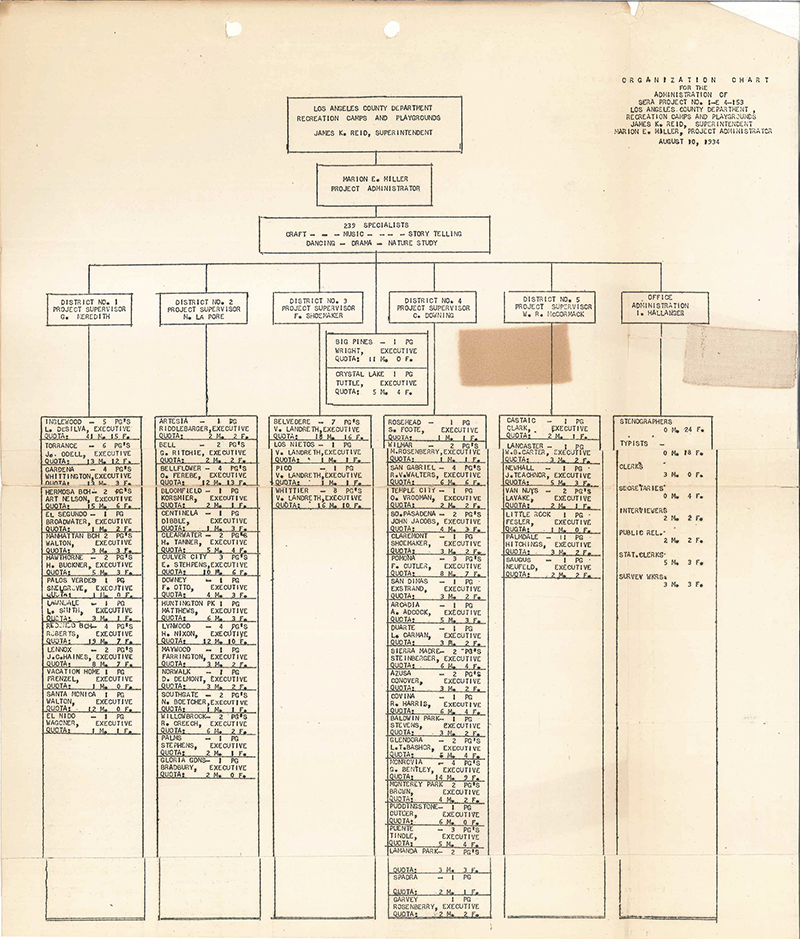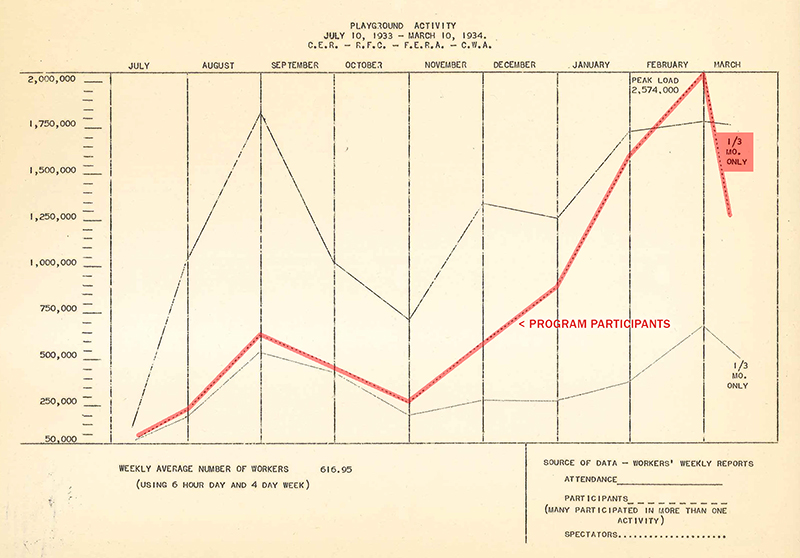L.A. County Takes Big Bite Out of Juvenile Crime During Great Depression.
History of the Recreation and Delinquency Prevention Projects,
Los Angeles County, January 1933-December 1935.
Los Angeles County Department of Recreation.
|
The Great Depression was ripping families apart by 1933. "The home, which must bear the brunt of unemployment and forced idleness ... was ceasing to exist as an harmonious and homogenous whole," and a rise in juvenile delinquency was a natural outcome, according to a Los Angeles County report on a highly successful diversion program the county rolled out that year. So successful was it, in fact, that everybody took credit for it. According to the County Recreation Department (which would become the Parks and Recreation Department in 1944), the program was the brainchild of Recreation Director James K. Reid and Probation Department Director Kenyon Scudder (namesake of a future juvenile detention facility in the SCV). According to Sheriff Eugene Biscailuz, however, the reduction in juvenile delinquency was his deputies' doing as much as it was that of a particular juvenile court judge who "originated the idea of more play and less crime." It just shows it was a collaborative effort — although the Recreation Department was indeed the lead agency. Funded initially through one of several federal New Deal stimulus programs and matched by county funds, the program implemented supervised sports and recreational activities at public playgrounds across Los Angeles County — and it put people to work to operate them. A survey found that out of 268 public playgrounds in the county — about half on school grounds and half county-operated — only 64 were being used at full capacity because of previous budget cuts. Now, with federal funds in hand, not only could all 268 operate at capacity, but an additional 85 new playgrounds opened, including 37 in communities that didn't previously have one. The county knocked on doors to get the word out to prospective participants, especially in communities hard-hit by juvenile crime. An average of 617 recreation leaders and support staff were hired full-time at a rate of 30 hours a week, 50 cents an hour — double the New Deal program minimum of 25 cents. Trained to lead programs ranging from baseball, volleyball, track and field, horseshoes and table tennis to scrapbooking, stamp collecting, storytelling and more, they served a population of juveniles that rose from 50,000 participants per week in July 1933, when the program started, to "the staggering peak of 2,574,000" per week in February 1934. The entire county population was around 2.3 million; daily participants were counted multiple times each week, and participants in more than one program were double-counted. But it was still a lot. In some of the roughest parts of the county, juvenile crime decreased by 80 and 85 percent. Activities attracted out-of-work adults, too. By the end of the second month of the program in Huntington Park, "approximately 250 men were cavorting daily in baseball, horseshoes, chess and other activities." In Newhall, which had a public park on the K-8 school grounds on Walnut Street, eight workers (5 male, 4 female) under an executive named J. Teachnor supervised recreation programs (see below). Saugus had four workers (2 and 2) under an executive named Neufeld, and Castaic had three workers (2 male, 1 female) under an executive named Clark. It's possible those programs were held on school grounds, too; we don't know. When federal funds ran out in March 1934, the State Emergency Relief Administration kicked in. And when funds ran short, sponsors stepped up to the plate in many communities. Hardware stores, lumber companies, utilities, oil companies and others provided services and materials to complete playground facilities, while many school boards opened their classrooms and auditoriums for evening activities. The Recreation Department took bragging rights in its wrap-up report, saying its planning and organization served as the model for "all of the successive set-ups of professional, technical, women's work and community service projects" in the state and nation. Biscaliuz put it succinctly in the L.A. Times (August 8, 1933): His deputies had been fielding six child criminal cases per day. When the program was running, they were seeing just one case a week. "It is obvious that youngsters now steal bases rather than plunder."
Download individual pages here.
|


